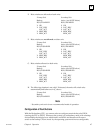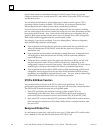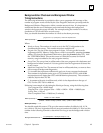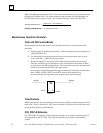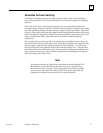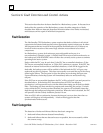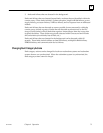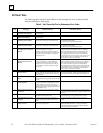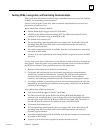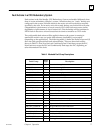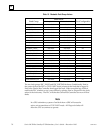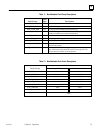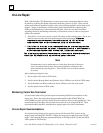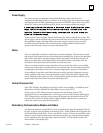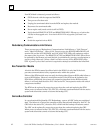
4
75GFK-0827 Chapter 4 Operation
Faulting RCMs, Losing Links, and Terminating Communications
There are distinct differences between losing a redundant communications link, faulting
an RCM, and terminating communications.
Faulting the RCM module occurs only when a hardware related failure occurs such as a
parity error or VME bus error.
Action taken when a board is faulted:
Module Failed fault is logged in the PLC Fault Table.
All LEDs on the RCM module are turned OFF. The LEDs on the other RCM will
continue to be updated as long as that RCM is OK.
The module fault contact is set.
The corresponding communications link is no longer used. If the other link is still
operating, then that link will be used for all further data transfer and units can
remain in synchronization.
If no other communications link is available, then the unit functions as a stand-alone
unit when in RUN mode.
A power cycle, after replacement of the faulted RCM, is required to restore the RCM
to service.
Losing a Link occurs when a link timeout occurs (that is, no data received in the expected
time period). Since the system is not certain that a lost link is due to a hardware failure,
the RCM is not faulted. Some possible causes for a link timeout are:
1. Remote unit has failed and is unable to communicate.
2. Configured fail-wait timeout is too short and a long sweep or communications
window has resulted in a link timeout. Normally the other link will continue to
function in this case and the systems remain synchronized. If the condition
continues, the remaining communications link will timeout in a subsequent sweep.
3. A hardware problem is present that prevents data from being transferred but is not
detectable by error checking mechanisms such as parity errors (there are no known
problems in this category).
Action taken when a link has timed out.
Link Timeout fault is logged in the PLC Fault Table.
The OK and Local LEDs on the RCM in the RCM to BTM link that failed will
continue to be maintained (that is, they will stay ON and the Local LEDs will reflect
the state of the Local unit) but the Remote LEDS will be turned OFF. The LEDs on
the other RCM will continue to be updated as long as that RCM is OK.
The module fault contact is set.
The corresponding communications link is no longer used. If the other link is still
operating, then that link will be used for all further data transfer and units can
remain in synchronization.
If no other communications link is available, then the unit functions as a stand-alone
unit when in RUN mode.
A power cycle of either unit is required to restore the link to service.



